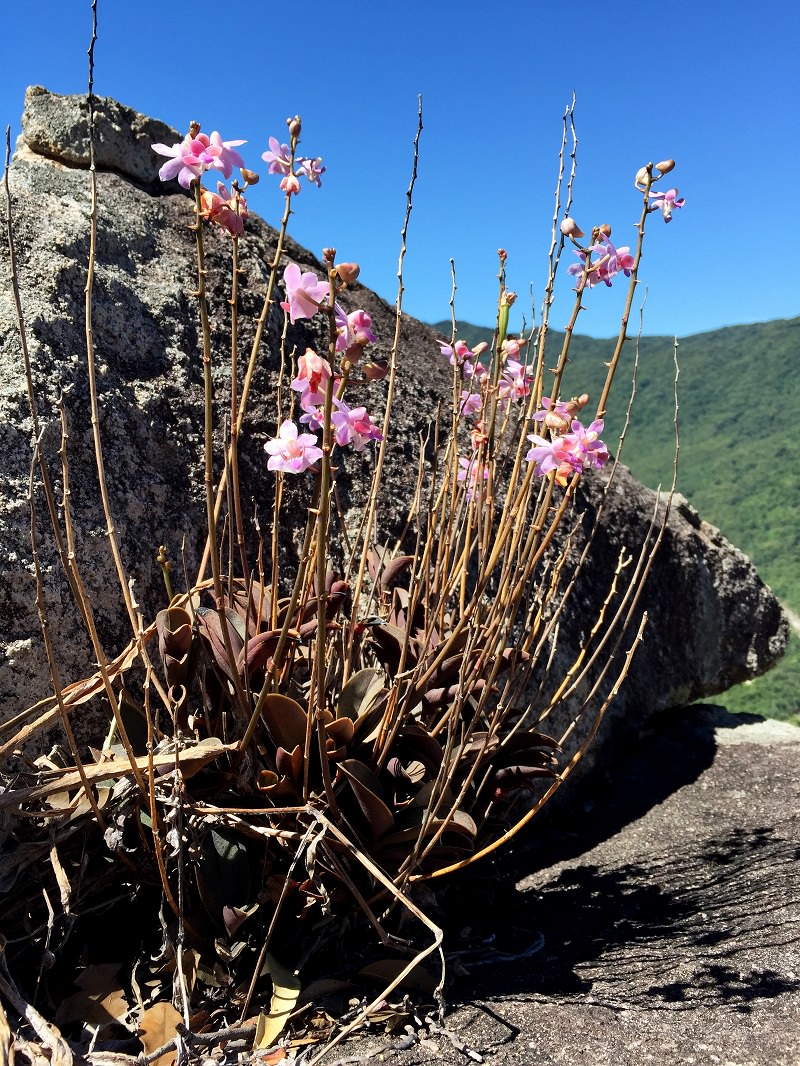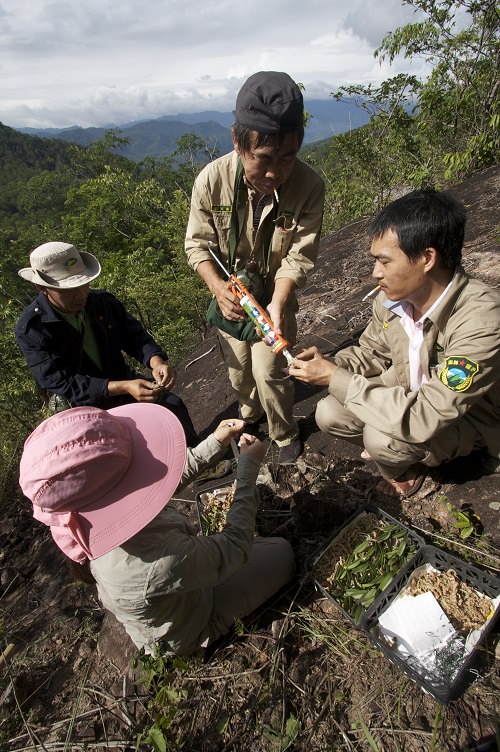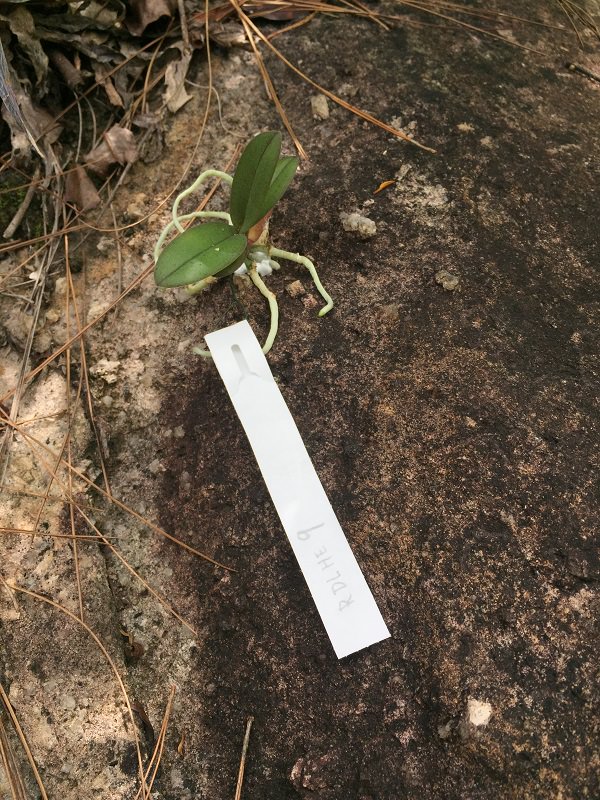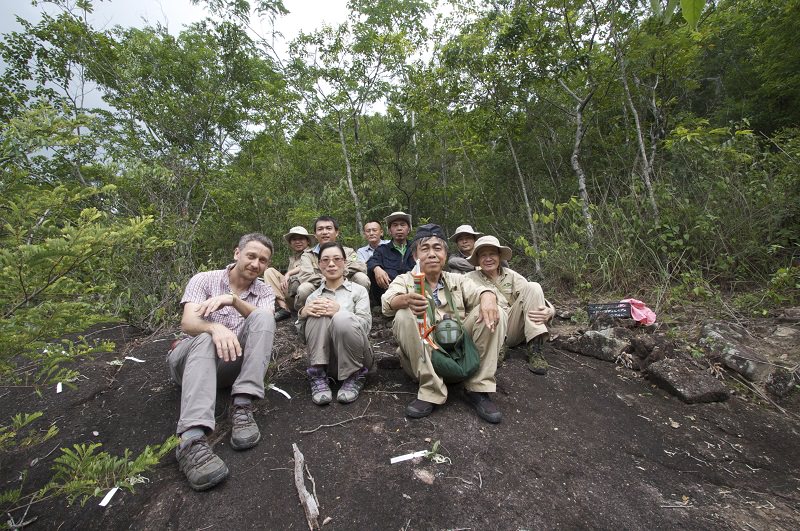Restoring populations of the endangered orchid Phalaenopsis pulcherrima in Hainan
Building on many years of collaborative experience of nature conservation in Hainan, KFBG signed a Memorandum of Understanding (MOU) with Hainan Wildlife Conservation Bureau and Bawangling National Nature Reserve Administration in March 2015 to help restore wild populations of an endangered orchid.


Flowering Phalaenopsis pulcherrima found in Hainan
Phalaenopsis pulcherrima is a wild relative of the colourful moth orchids that are popular as potted plants and sold in huge numbers particularly at Chinese New Year. Although its flowers are smaller compared to those of the cultivated forms, they are just as striking and long lasting. This has made them vulnerable to over-collection for the horticultural trade. As a result, the species has disappeared from many areas in tropical Asia where it once occurred. Hainan is the only province in China where this orchid is known to occur and, as elsewhere, its numbers have declined over the last few decades.

Locally sourced but micropropagated, nursery-grown seedlings ready for planting-back back into nature.
The objective of our partnership in Hainan has been to reverse this decline by propagating seedlings and planting them out at suitable, well protected sites in Bawangling National Nature Reserve. The task began with population surveys and a screen of genetic diversity among the remaining populations to help us plan the reintroduction. We then collected selected seed capsules in late 2015, ensuring high genetic diversity from a native source. Large numbers of healthy seedlings were produced following germination on a sterile, agar-based medium in the laboratory, making use of a technique called micropropagation. The young plants were then grown-on in a nursery until spring 2017, and the first round of planting-out was conducted in July.

KFBG and Bawangling National Nature Reserve staff applying a non-toxic adhesive to the base of the seedlings at the reintroduction site.
Eight Bawangling field staff joined two KFBG officers in putting the first batch of plants back into their natural habitat. Since P. pulcherrima naturally grows directly on exposed granite shelves, one technical challenge was finding a way of attaching the plants to the substrate in an ecologically sensitive way. Our solution was to use a natural, fast-drying, non-toxic glue. Several hundred seedlings were planted at the first site, and monitoring is now ongoing to assess how well they fare. In addition to the baking sun, the plants will have to endure herbivory, monsoon rains and drought, so some mortality is inevitable. We hope that enough will survive, flower and reproduce to give rise to Hainan’s self-sufficient populations of the future.

Fixing seedlings in their new home.
In parallel, KFBG has been supporting a PhD student at Hainan University to research the pollination biology and population ecology of the orchid. His work has shown that, for successful pollination to occur, P. pulcherrima depends on the presence of other, similarly coloured flowers in the immediate vicinity to help attract and sustain its natural pollinators. This finding reinforces the notion that many orchids – and indeed most plants – need a healthy ecosystem to ensure long-term survival.

Some plants have been labeled for ongoing monitoring of their performance.

The collaborative exercise was a wholesome, earthy experience for all involved, and we await the results of the monitoring with great anticipation.

